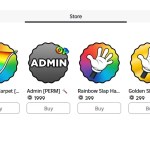Game development is hard. It’s hot right now, and when I first wanted to start making games, I watched tons of videos trying to learn the ropes. But as a young boy, being told I needed to learn scripting, modelling, create good graphics, and even pay for advertising felt overwhelming. So, I put the idea in the back of my mind for a few years because I didn’t feel ready for the challenge.
But what if I told you there are some secret tools that helped me make three games from scratch without writing a single line of code?
Game development is considered one of the hardest jobs in the world. Every year, millions of people come up with amazing game ideas and get to work. Yet, after months or even years, many give up. Why is this? Our brains tend to make things look easy when they are not. When you think of a cool idea for your game, you often don’t consider all the factors that make that idea possible.
Being an indie developer makes this especially tough because you have to juggle programming, music, art, sound effects, and more—all on your own. Managing all these skills at once can dramatically slow down your progress toward creating your dream game. There has to be an easier way around it, right?
Well, yes… sort of.
Before making any games, you need to pick a game engine, which is basically the place where all the development happens. There are many great options out there like Unity—which powers Pokémon Go—and Unreal Engine, famous for Fortnite. Although these engines can produce amazing games, they require skill, and skill can be intimidating if you’re just starting out.
If you want to make a full game with no prior knowledge, I recommend Roblox Studio. Now, I know some of you might be thinking, “Wait, that’s a kids’ game!” But Roblox isn’t just the blocky world you remember. Take a game on Roblox that looks similar to Call of Duty, for example. Roblox Studio is a great place for beginners because it uses Lua, a very simple coding language, and the workspace layout is much easier to digest than other game engines.
On top of that, Roblox takes care of publishing, servers, databases, multiplayer, and monetization—basically all the hard stuff.
When you open Roblox Studio, you’re greeted with a page where you can pick a template to start creating on. You can choose a blank baseplate or complete games like Line Runner, where you collect coins and jump over zombies. For this guide, we’ll use a baseplate to make a game from scratch.
The newest feature to try out is Roblox’s generative AI. To enable it, go to File, then Beta Features, and check the box labeled AI Powered Code Completion. This AI looks at the existing script and generates suggestions based on comments you write.
In our first script, I typed a comment asking to make a new part each second. The AI generated code that did exactly that, even randomly placing parts and sizing them. Pressing Tab applies the suggestion, and when I tested the game, a new part was spawned every second in a different spot.
Next, I asked the AI to generate a random colour for each part and increased the spawn rate to 10 times per second. It was fun to watch, and honestly, the AI worked shockingly well.
After getting comfortable with the AI, I tried making a game without writing a single line of code. My idea was simple: be in a box where parts drop from random locations, and if one hits you, you die.
I added scripts to make the parts gradually transparent and to kill the player on contact. I set their size to always be five and made them red. Testing the game showed the AI had done everything I asked perfectly.
To prevent players from running away from the spawning parts, I added a simple map. There was no point system, but it was enough to demonstrate the power of Roblox AI.
Next, I showed off another feature that makes game creation even easier: the Toolbox. Opening the Toolbox via the View tab reveals a library of models, sounds, animations, scripts, and plugins uploaded by other users.
To make a speed game where you get faster over time, I searched for a speed simulator kit in the Toolbox and dragged it into the workspace. Many models come with instructions for placement and customization.
This particular model included complex scripts and a complete map. After just two minutes of setup, the game worked perfectly. You start slow and get faster by running and collecting speed orbs.
To make the game more original, I built a new map using the Toolbox, adding a park and some city buildings on the side.
With a complete game, I moved on to monetization. I searched for a donation board in the Toolbox and added Dev Products to let players donate Robux for the massive amount of effort I put in.
The only downside was the game felt kind of boring, so I decided to make something more exciting using the Toolbox again: a zombie shooting game.
I found a gun pack that worked well, with sounds for shooting and reloading. Testing the game showed it worked fine, but there was nothing to shoot at. I then searched for a zombie spawner. The first one didn’t work perfectly—who would have guessed Toolbox models might have bugs—but after some trial and error, I found a better gun and got it working smoothly.
I also found a simple map fitting a zombie apocalypse vibe and added it to the game. Testing revealed a fully functional zombie wave game with working shooting and enemy systems.
In this video, I was able to make three fully functional games without any scripting or modeling. Obviously, if you want to create high-quality games, you should learn some basics. But if you just want to make a fun game to play with friends for a day, these tools make it easier than ever.
I’m excited to see how AI improves the game development process in the future. If you want to play any of the games I made in this video, click the links in the description.
Thanks for reading, and I’ll see you in the next one!






